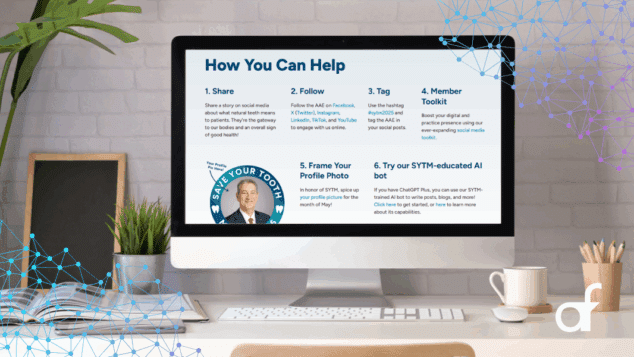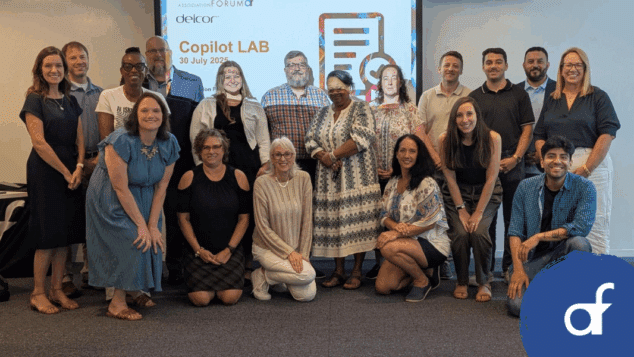Member-First Approach

In the past few years, the American Society of Anesthesiologists (ASA) has undergone a total digital transformation. Gonzo Schexnayder was brought on to the ASA team in July 2017 as the director of digital product management.
He has spent the past two-and-a-half years transforming the association’s digital user experience by setting measurable goals and tracking them, collecting detailed user feedback and mapping member journeys.
We spoke with Schexnayder about the ASA’s digital transformation and what other associations can learn from their journey.
FORUM: When you began focusing more on the digital user experience, what types of goals did you set?
Gonzo Schexnayder: When I was at other companies, the key performance indicator (KPI) of a website was always how much traffic you got in the form of sessions and page views — especially for ad-driven websites. My goal at the ASA was to have members visit our website more frequently but spend less time and fewer page views getting there.
Anesthesiologists are really busy. We know they’re constantly moving between operating rooms, and they’re in very high-anxiety roles. I don’t want them visiting the website for something they need to help them in their career and spending any time on the website getting to it. I want them to find it immediately.
To facilitate this, some of our goals have been improving navigation, improving search results and improving page speed and how quickly a page loads. All of those things factor into the decisions we make when we look at improving various aspects of the digital experience.
FORUM: What type of data have you collected in order to inform your decision-making?
GS: We’ve reviewed the registration process to ensure it has the best user experience possible and highest conversion factors across each of the pages.
We also do a lot of research with our members. In product management, you can’t make decisions without research and data. I’m deeply involved with Google Analytics and outcome data from the experiences our users have. We look at both quantitative and qualitative data. For example, when a member services representative gets a call from a member who’s had a horrible experience, they’ll often forward them to me, and I’ll give them a call to talk about it. Nine times out of 10, what they bring up
will help me find a way to improve the website.
We’ve also been doing a bunch of interviews. Two years ago, we launched the Lifecycle and Ecosystem Project in which we look at the lifecycle of a member from the moment they decide to be an anesthesiologist to the moment they retire. We’ve been interviewing members in various cohorts to understand their lives as anesthesiologists — where they go for information, what kind of information they get, the level of anxiety they have at various points of their career. We want to really understand them, so we can support them better.
We can look at all of the phases and transitions of their career and target our products and services to each of those phases and transitions in order to figure out where we might have holes in the value we provide to our members.
FORUM: What results have you seen so far?
GS: When I first started at the ASA, we were using an expensive survey tool to ask about user satisfaction. I switched over to Google’s Website Satisfaction Survey that asks users four simple questions:
- Overall, how satisfied are you with this website?
- What, if anything, do you find frustrating or unappealing about this website?
- What is your main reason for visiting this website today?
- Did you successfully complete your main reason for visiting this website today?
We’ve made significant improvements. Since early 2018, I’ve run the same survey quarterly. When we launched our new website in October 2018, our satisfaction scores dipped, which is expected when you make a big change. But since then, we’ve seen a gradual return of our satisfaction scores above base level.
In Q2 2018* when we initially began collecting data, 40.9% of respondents were very satisfied with their experience on the website, and 23.2% were somewhat satisfied (a combined 64.1%). In Q3 2018, when we launched the new website, these numbers went down to 38.7% and 18.4%, respectively (a combined 57.1%).
In Q4 2019, our results showed that 49.0% were very satisfied with their experience on the website, and 22.3% were somewhat satisfied. My goal this year was to raise that combined percentage above 73%. Right now, we’re at 71.3%.
FORUM: Focusing on the user experience can be a shift for some associations. Did ASA have to shift its mindset in any way?
GS: Just the language of user experience and product management was new to the staff.
With associations, a committee will often come up with an idea — we want to build this thing or write this thing or do this thing — and the general rule is that the staff does what the committee members want.
One of the things product management really helps with is establishing what part of our membership this “thing” is for. For example, building a guide for anesthesia department administration professionals doesn’t serve every single member of our association. But knowing exactly who something is for can help you not only create that content, but also talk to those specific members to make sure that content serves their needs.
FORUM: What are some of the biggest lessons you’ve learned during your digital transformation?
GS: It’s important to really talk about your members as the humans they are and show some empathy for them in ways that perhaps haven’t been communicated before.
When we interview our members, they talk to us a lot about production pressures. We’re never going to be able to personally change their working environment. But we can recognize that they’re under production pressures, and we can make sure that when we communicate with them, we use the language they use, and we make decisions in light of that.
This means reducing the number of page views on a form, reducing the amount of time someone spends on the website or making it easy for them to get into an education product they bought last week. We don’t want them spending 10 minutes surfing the website trying to find it.
FORUM: What are some of your biggest goals moving forward?
GS: One of the things we’ve realized from interviews is that our current website navigation doesn’t support our members as well as it should. Our hypothesis going into this project is that a task- and role-based website navigation is going to be more conducive to our members finding what they need than our current organizational- and topic-based navigation.
We are going to start out by doing a card-sorting experiment both in person and with a group of members online. This will help us understand how our members think about grouping content. We will apply that research to some wireframes, and then we’ll take those wireframes and put them in front of another group of members to get their feedback on whether the new navigation supports their needs better than the current navigation.
FORUM: What advice do you have for associations embarking on a similar journey as yours?
GS: Talk to as many of your members as you can about what they need in order to be successful. Every chance you get, find out where they go for information, where they go to complete the tasks they need to complete, why they go to those places and whether it’s your association’s website or not. Take a very empathetic approach to their careers and understanding how you can support their needs.
Your members are never going to be able to tell you exactly what they need. But a lot of times, if you listen to what they say, you can figure out what they need—even if they can’t expressly state it. Our job is to interpret what they say and build the products and services to support that need.
A marketing survey might not point out the real human nature of a high-pressure environment the way an interview will. The more you talk to people and share those interviews throughout your staff, the more human your members become and the more opportunity you’ll have to meet their needs. 
*A Google Website Satisfaction Survey “quarter” is not a typical calendar quarter, but a three-month period based on when the survey runs. Every three months, it automatically ends the data collection and starts over again.
ASA quarters mentioned above:
Q2 2018: June 6, 2018 to Sept. 6, 2018
Q3 2018: Sept. 6 to Dec. 6, 2018
Q4 2019: Dec. 6, 2019 to March 6, 2020
![]() Develop Your Plan. For guidance on fine-tuning your tech plan, read Association Forum’s Professional Practice Statement “Strategic Technology Planning for Associations” at associationforum.org/browse/practice-statements.
Develop Your Plan. For guidance on fine-tuning your tech plan, read Association Forum’s Professional Practice Statement “Strategic Technology Planning for Associations” at associationforum.org/browse/practice-statements.
Tags
Related Articles
Getting into the “Red Zone”: How Association Leaders Can Forge an Unshakeable Value Proposition
In a crowded marketplace, associations must move beyond benefits and boldly claim their “Red Zone”...
Turning AI Into Member Value
How AAE’s Save Your Tooth Month GPT became a personalized marketing assistant for members
The Power of Taking the AI Journey Together
Forum’s first Microsoft Copilot Lab brought together 20 professionals to explore how smart adoption of...




